The content of the article
At first glance, daily oral hygiene is not particularly difficult, but experienced doctors consider this statement erroneous. Dentists unanimously shout that brushing your teeth requires a thorough approach and attention to detail. It is from this procedure that the further health of the oral cavity, in particular the palate and gums, depends. Improper hygiene promotes the development of bacteria, which leads to deterioration of the teeth and the appearance of an unpleasant odor.
Why brush your teeth
It is no secret that the oral cavity is considered the dirtiest place on the human body. Such a zone is most often in contact with the environment, this is due to the presence of tens of millions of various forms of microorganisms.
Since teeth serve as a mechanism for grinding food, food particles often get stuck between them. This fact contributes to the development of a breeding ground for bacteria. If a person does nothing to remove the "nest", organisms begin to multiply, forming a full-fledged plaque.
It adversely affects the health of enamel, eventually destroying its structure. In turn, such a process leads to caries. From here begins the inflammation of the gums and the roots of the teeth, the natural defense against infections is gradually reduced.
Worse, lack of hygiene behind the oral cavity contributes to the formation of tartar and the appearance of an unpleasant odor (halitosis).
How often do you need to brush your teeth?
- The frequency of the procedure varies from 2 to 3 times a day. At the same time, primary hygiene is mandatory in the morning after waking up and taking breakfast, the second - before bedtime. The duration of one cleaning should not be shorter than 3-4 minutes, while the entire time you need to use the brush and paste as efficiently as possible.
- In addition to treating teeth on all sides (inner, outer sections), it is important to pay due attention to the interdental spaces. It is they who accumulate the remains of food in themselves, as a result of which plaque develops due to the multiplication of microorganisms. Cleaning the space between the teeth is carried out by using a special thread (flosses), which does not damage the gum structure. For proper processing, wrap 2 edges of the thread on the fingers, then stick it into the interdental area, then lift it up and down. Leftover food will come out, they need to be removed with a toothpick or water.
- In addition to using toothpaste and floss, you need to rinse the cavity with a special solution with an extract of needles or other medicinal herbs. The procedure is carried out 2-3 times a day, preferably after a meal, and it all depends on the specific drug. Before buying, carefully read the column "Composition", it should indicate Chlorexidine / hydrogen peroxide and alcohol. The average duration of rinsing usually does not exceed 30-40 seconds.
- Brush your teeth after each meal, while you can use any convenient method: chewing gum, toothpaste, special rinse aid, floss, etc. It is important to know that when using chewing gum, the duration of the so-called cleansing should be at least 7 minutes. In some cases, it is necessary to consult a dentist regarding brushing your teeth after eating.
- Do not violate the rules for checking the oral cavity by a professional; you need to visit the dentist once every six months. If possible, do ultrasonic or mechanical treatment, as well as cosmetic whitening. The specialist will clean the colored coating (coffee, tobacco, coloring vegetables, etc.), remove tartar.
How to choose toothpaste
- The choice of pasta directly depends on personal preferences. On the shelves of hypermarkets and cosmetic stores you will find products for every taste and budget (exotic fruits, herbs, mint, honey, etc.). Many people like the fragrance-free composition, it belongs to a more natural.
- If you have problems with gums and teeth, consult your dentist. The specialist will write out the product, taking into account individual characteristics (caring, medical or preventive).
- If possible, buy a paste of a professional series ("Splat", "Doctor Getz"), they do not destroy the structure of enamel and do not lead to bleeding of the gums.
- Many people make the mistake of buying whitening products and then using them as their primary ingredients. It is important to understand that such a series is designed for a one-time daily use. The same applies to pastes that contain activated carbon or acetylsalicylic acid, they should not be abused.
- If you are choosing a product for children or the elderly, look for the appropriate mark on the tube. In cases when pregnant and lactating women resort to the technology of proper brushing, they should also be careful. Buy only the pasta whose list of ingredients you know.
How to choose a brush for brushing your teeth
- Equally important is the right choice of a toothbrush that removes plaque in minutes. Many people buy tools with bristles of maximum rigidity, making a blunder.
- Doctors recommend purchasing only a soft or medium brush that fights bacteria and prevents the formation of tartar. The advice is especially relevant for people who have sensitive enamel and are prone to bleeding gums.
- The next brush selection rule is the correct size of the head. In no case should it be wide; a similar form affects the gums, damaging them. Give preference to a brush with a long and narrow head, it handles hard-to-reach spots as efficiently as possible (inside, wisdom teeth, interdental space, area in front of the gum).
- Pay attention to more functional brushes that contain a special area for cleaning the tongue on the back. Anatomical tubercles perfectly adapt to the surface without damaging the scales. In addition, this combination is extremely convenient to use: first you brush your teeth with bristles, and then turn the brush over and process the tongue.
- If you have already bought a brush that does not provide for cleaning the tongue, do otherwise. On sale you will find a special scraper and gel, in a pair these products not only conduct hygiene, but also fight bad breath.
- The following rule is the most important - the toothbrush needs to be changed regularly. As soon as you notice that the bristles have lost their former appearance and become curved, send the tool into the trash. Usually brush replacement occurs after 2-3 months, in rare cases more often. It all depends on the particular manufacturer, the materials used, the frequency of hygiene. If you do not perform the replacement in the expected time, you will automatically become stronger press on the brush, which will lead to gum disease.
- Recently, the issue of choosing the material from which the brush is made has become extremely urgent. On the shelves you can see tools with bristles made of nylon and natural fiber. The latter option is environmentally friendly, but bacteria are more likely to accumulate in its structure. It is necessary to change such an instrument every month, in addition, the pricing policy is extremely high.
Features of brushing your teeth
- Microbes are removed not only from the surface of the teeth, but also from the area of the cheeks, tongue. Such manipulations reduce the risk of developing bacteria, caries, and inflammation by 2 times.
- Always start hygiene with brushing your teeth, make vertical rather than horizontal movements. By your actions you have to “sweep” the bacteria, move from the cutting edge to the gums, and then vice versa.
- Surely you have a question: "Why can’t you brush your teeth with horizontal or circular motions?" The fact is that such manipulations are extremely erroneous, after they are carried out, the plaque clogs in the interdental space. In addition, after horizontal processing, there is a likelihood of a wedge-shaped defect. It results in tooth loss, periodontal disease, and hypersensitivity.
Tooth brushing technology
After studying the important features, recommendations regarding the choice of brush and paste, you can proceed to brushing your teeth.
- Take a toothbrush in your hand, rinse it first in boiling water, and then in room temperature water. After that, apply a little pea-sized paste to the bristles. It is not forbidden to use more cleaning product, but then foam will begin to accumulate in the mouth, creating inconvenience.
- Bring the brush to the edge of the upper teeth, observing an angle of 45-50 degrees. Drive it first up, then down (vertically). Begin treatment with an extreme tooth, take 4 sets, then move on to the next. In this way, you must process the entire top row in turn.
- Repeat the same manipulations from the inside, do not forget, the movements should "sweep out" the accumulations and the remnants of food. Treat alternately distant teeth, gradually moving to the front.
- Next, go on to brush your chewing teeth. In this case, a horizontal position is allowed. The cleaning of the upper jaw is completed, go to the lower. The technology is identical to the previous one: bring the brush to the distant tooth, treat it with knocking movements, move on to the next.
- Following the outer part of the lower jaw is the inner. Here you must first clean the fangs, then the front teeth and only then distant. Proper brushing has come to an end. Rinse your mouth with slightly warm water, apply a small amount of paste on the back of the brush. Brush your tongue, moving from the root to the tip.
- Next, squeeze the jaw, cover the brush with paste, swipe in both jaws in a circular motion. Do not press hard; movements should be unhurried, soft. Such a move will make it possible to massage the gums, improving blood circulation. Now you can rinse your mouth with water, the work with the paste is completed.
- Tear off about 30 cm of dental floss, place it between your fingers, clean the area between the teeth. Move from the extreme to the front, do not clean different slots with one patch of floss (thread). Otherwise, you will transfer bacteria from one area to another. Be careful not to cut the gums and cause infection. Rinse the cavity with a special composition.
It is easy to brush your teeth, if you follow a certain sequence and carefully refers to the choice of tools. Get a brush of medium hardness, buy a professional paste. Finish hygiene using dental floss and a special rinse aid.
Video: how to brush your teeth


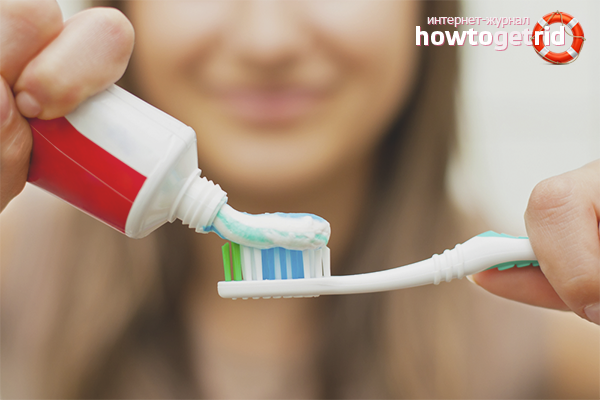
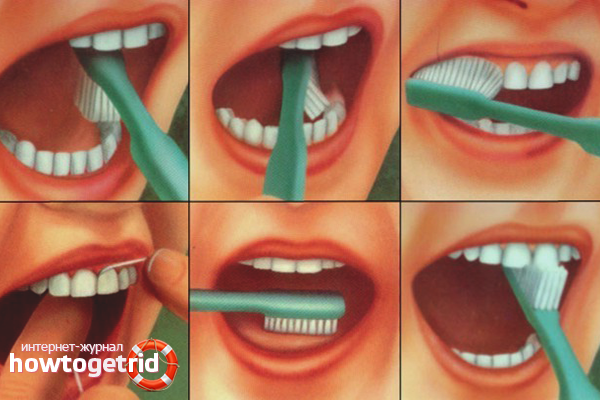

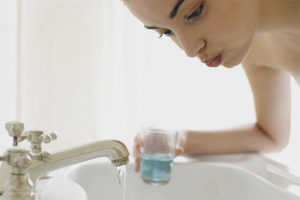
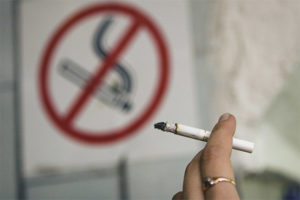


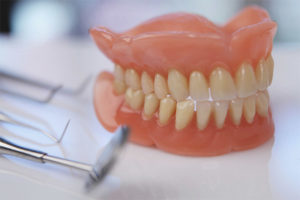
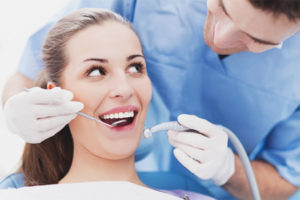
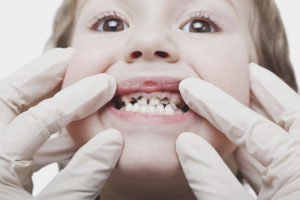
Submit